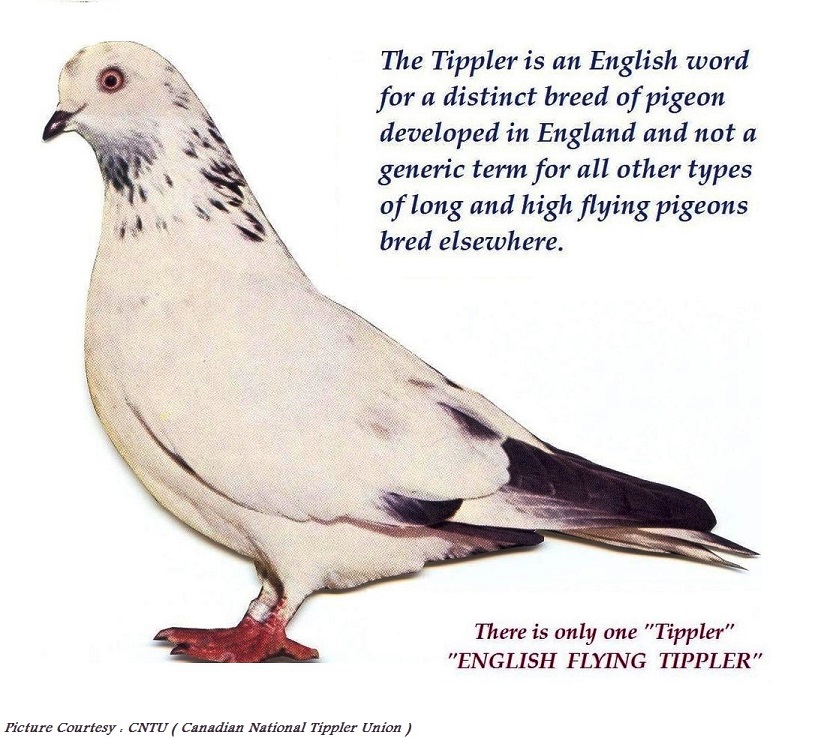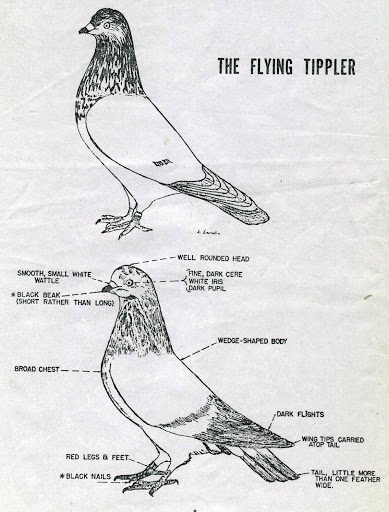
Below are the physical standards (Phenotype) of the Flying Tippler Pigeon, as recognized by the NPA ( National Pigeon Association ) in USA & CNTU ( Canadian National Tippler Union ). Some Tipplermen might have slightly different preferences over others regarding these traits, but the standards below are the ones that are commonly accepted by most of the Tipplermen in North America, especially for the show pens. Note that these traits are about beauty standards only and have nothing to do with the bird’s performance which determined only by his flying record.
Head – Small with refined shape and appointment, gracefully rising curve but no frontal bulge. Rounded rather than angular, with slight flatness permitted on top.
Neck – Medium short, sharply tapered. Broad at shoulder, narrow at the head. Tight and clean in front. no gullet.
Eye – White (pearl) to Orange, but the “White” is preferred over all other colors. Cere should be fine and dark. Bull eye (Dark eye ) and Broken-eye accepted also if the bird is White, Pied, or pure Almond.
Beak – Should be stout and medium-small. very dark is better. depending on the plumage.
Wattle – small, smooth, and White.
Legs – Short, Red, Free of feathers. Fairly wide-set with rear placement.
Feet – Small but strong. Red with dark nails. High-heeled, up-on-the-toe stance.
Station (posture) – Pronouncedly vertical rather than horizontal. Head up and back. More is to be expected of cocks in this matter.
Expression ( Behavior ) – Smartness, eagerness but not wildness should be dominant, with no suggestion of dull lack of interest.
Wings – stress importance of secondaries. Broad flexible overlapping feathers should be present, with no gaps in wings. Flights should be color tipped, carried atop the tail, and give every sign of strength. Topline smooth and without “sail”.
Tail – Notably narrow, but capable of great expansion. Strong but resilient feathers. In entirety, small and light in weight. All feathers tipped with color.
Keel – Shallow and long, for a tippler body, not a Homer. Coming quite close to the fork ( vent end ).
Fork – Firm and close to each other end and to the keel.
Back – broad at the shoulders, it tapers to the trim, strong rump to achieve the breed’s powerful wedge shape.
Chest – Broad and capacious, to accommodate the heart and lungs of an athlete pigeon. It should be big from side to side rather than projecting forward.
Plumage – There is no preference in these standards given to any color or pattern. The beauty here is in the eyes of the beholder.
